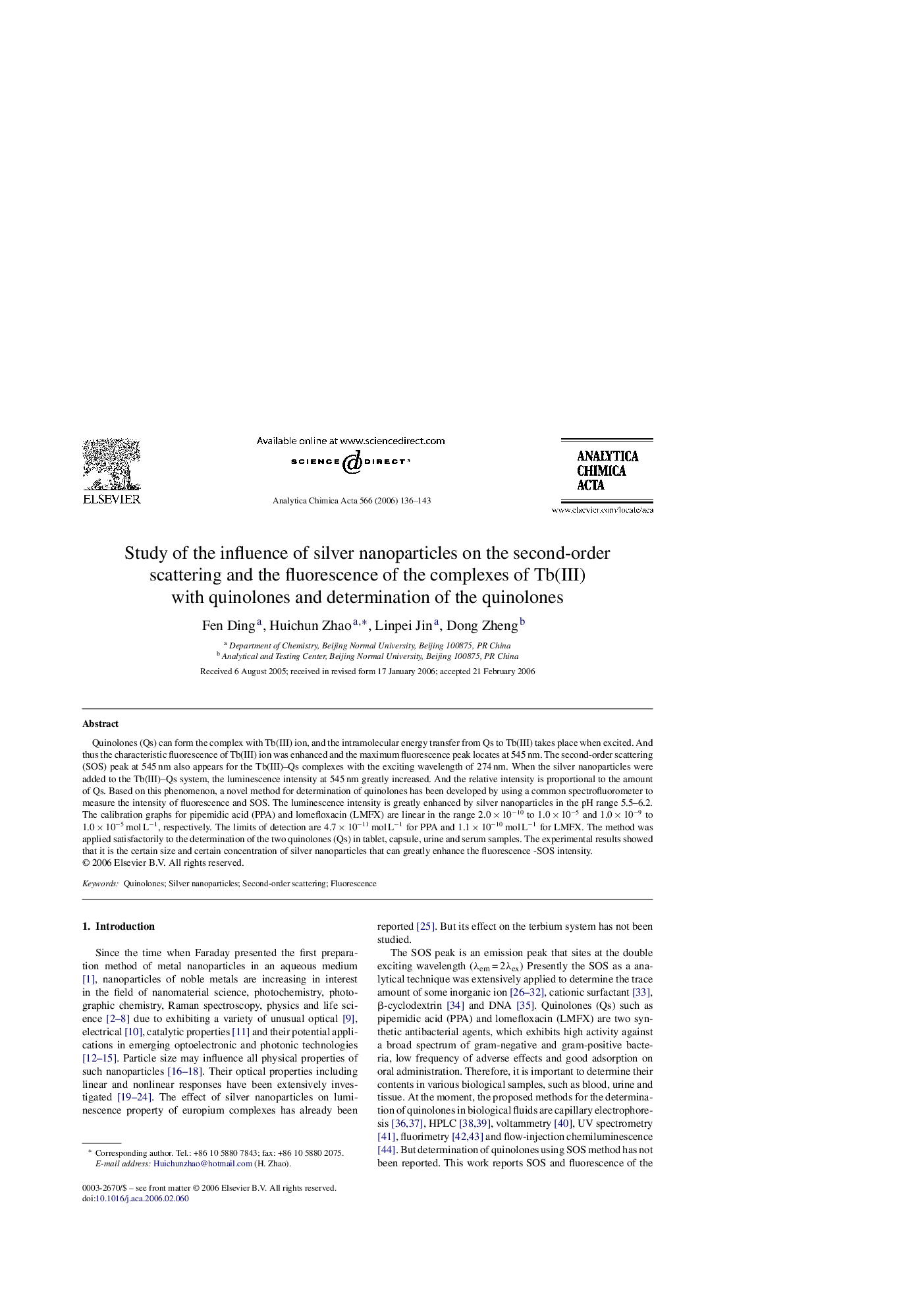| Article ID | Journal | Published Year | Pages | File Type |
|---|---|---|---|---|
| 1172055 | Analytica Chimica Acta | 2006 | 8 Pages |
Quinolones (Qs) can form the complex with Tb(III) ion, and the intramolecular energy transfer from Qs to Tb(III) takes place when excited. And thus the characteristic fluorescence of Tb(III) ion was enhanced and the maximum fluorescence peak locates at 545 nm. The second-order scattering (SOS) peak at 545 nm also appears for the Tb(III)–Qs complexes with the exciting wavelength of 274 nm. When the silver nanoparticles were added to the Tb(III)–Qs system, the luminescence intensity at 545 nm greatly increased. And the relative intensity is proportional to the amount of Qs. Based on this phenomenon, a novel method for determination of quinolones has been developed by using a common spectrofluorometer to measure the intensity of fluorescence and SOS. The luminescence intensity is greatly enhanced by silver nanoparticles in the pH range 5.5–6.2. The calibration graphs for pipemidic acid (PPA) and lomefloxacin (LMFX) are linear in the range 2.0 × 10−10 to 1.0 × 10−5 and 1.0 × 10−9 to 1.0 × 10−5 mol L−1, respectively. The limits of detection are 4.7 × 10−11 mol L−1 for PPA and 1.1 × 10−10 mol L−1 for LMFX. The method was applied satisfactorily to the determination of the two quinolones (Qs) in tablet, capsule, urine and serum samples. The experimental results showed that it is the certain size and certain concentration of silver nanoparticles that can greatly enhance the fluorescence -SOS intensity.
